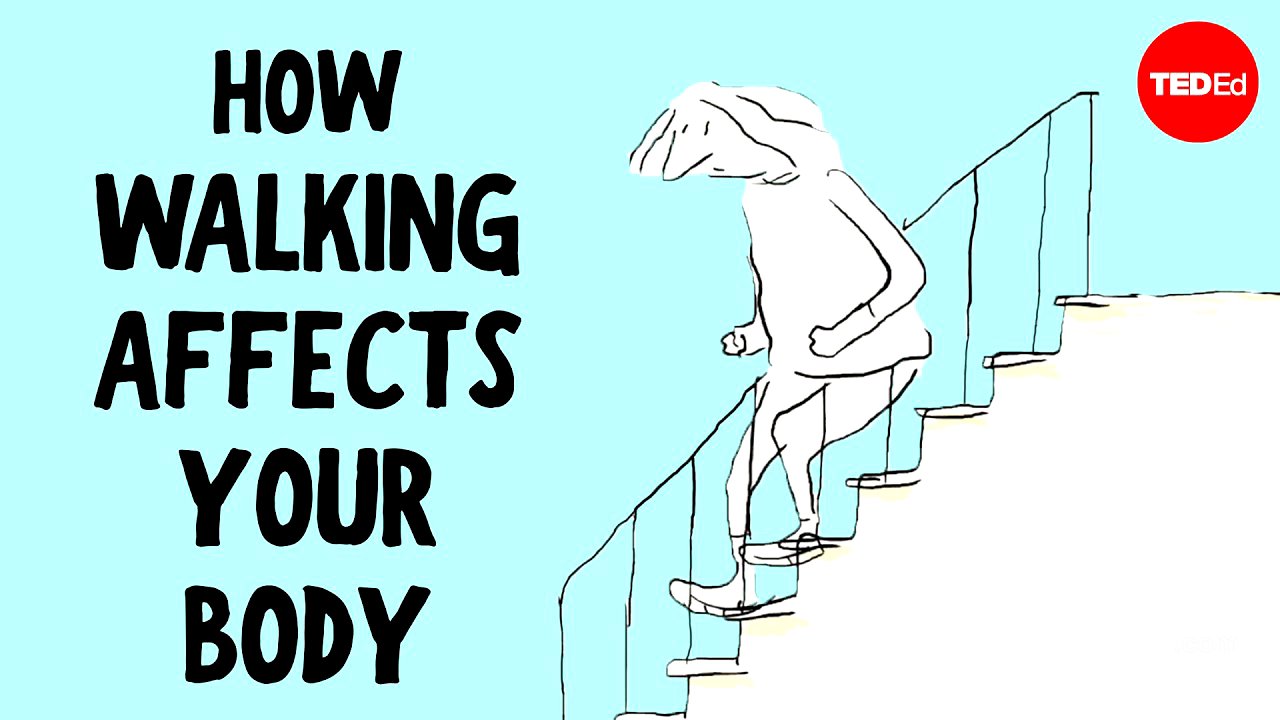Brief Summary
This TED-Ed video talks about the benefits of walking and how even a little bit of walking can improve your health. It highlights how walking improves mood, strengthens bones, reduces the risk of diseases, and benefits the environment. The video also touches upon the lack of walkable spaces in many cities and suggests ways to make communities more pedestrian-friendly.
- Walking improves mood and reduces anxiety.
- Regular walking strengthens muscles and bones.
- Walkable communities reduce reliance on cars and improve air quality.
Jean Béliveau's Walking Journey
The video starts with the story of Jean Béliveau, who walked around the world. He sometimes slept in unusual places, like jail cells. This story sets the stage to discuss how walking, even in smaller amounts, can be really good for your health.
Benefits of Daily Walking
Adding a bit of walking to your daily life can make a big difference. Even a short walk can lift your mood and reduce anxiety and depression. Walking releases endorphins, which are like natural painkillers, and lowers the stress hormone cortisol.
Physical Adaptations to Walking
When you start walking more, your body adapts. The muscles in your legs, torso, and back get stronger. Your blood vessels become better at delivering oxygen, and your heart pumps blood more efficiently. Over time, this can lower your blood pressure and reduce the risk of heart problems.
Long-Term Health Benefits
Walking is good for your bones too. It puts stress on them, which makes them stronger by helping them absorb calcium and minerals. Regular walking can also help with weight management and lower your risk of type 2 diabetes, certain cancers, and dementia. Walking is a simple exercise that most people can do, no fancy equipment needed.
Walkable Neighborhoods
You don't need to walk 10,000 steps a day to see benefits; any increase helps. If you live in a walkable area, it's easier to get those steps in by walking to work, the store, or to meet friends. Walkable communities also mean less reliance on cars, which improves air quality and reduces greenhouse gas emissions. Plus, people in walkable neighborhoods often feel less lonely and more satisfied with life.
Challenges to Walkability
A big problem is that many people don't have access to safe and nice places to walk. Cities are often designed for cars, with more money going to roads than sidewalks and parks. Even when there are walkable spaces, it's not always easy to get to them because residential and commercial areas are separated by busy roads.
Creating Walkable Spaces
There are ways to make places more walkable. For example, Vancouver turned a road into a greenway for walking and biking. This led to people exercising more, driving less, and reducing their carbon footprint. Even small things like painted crosswalks and curb extensions can make a big difference in making downtowns more walkable.
Conclusion
The video concludes with Béliveau completing his walk around the world. The main point is that you don't need to walk as far as he did to see the positive effects of walking on your health and the environment.









